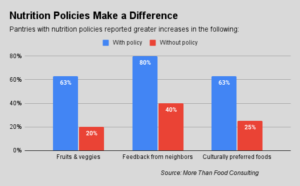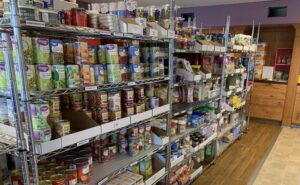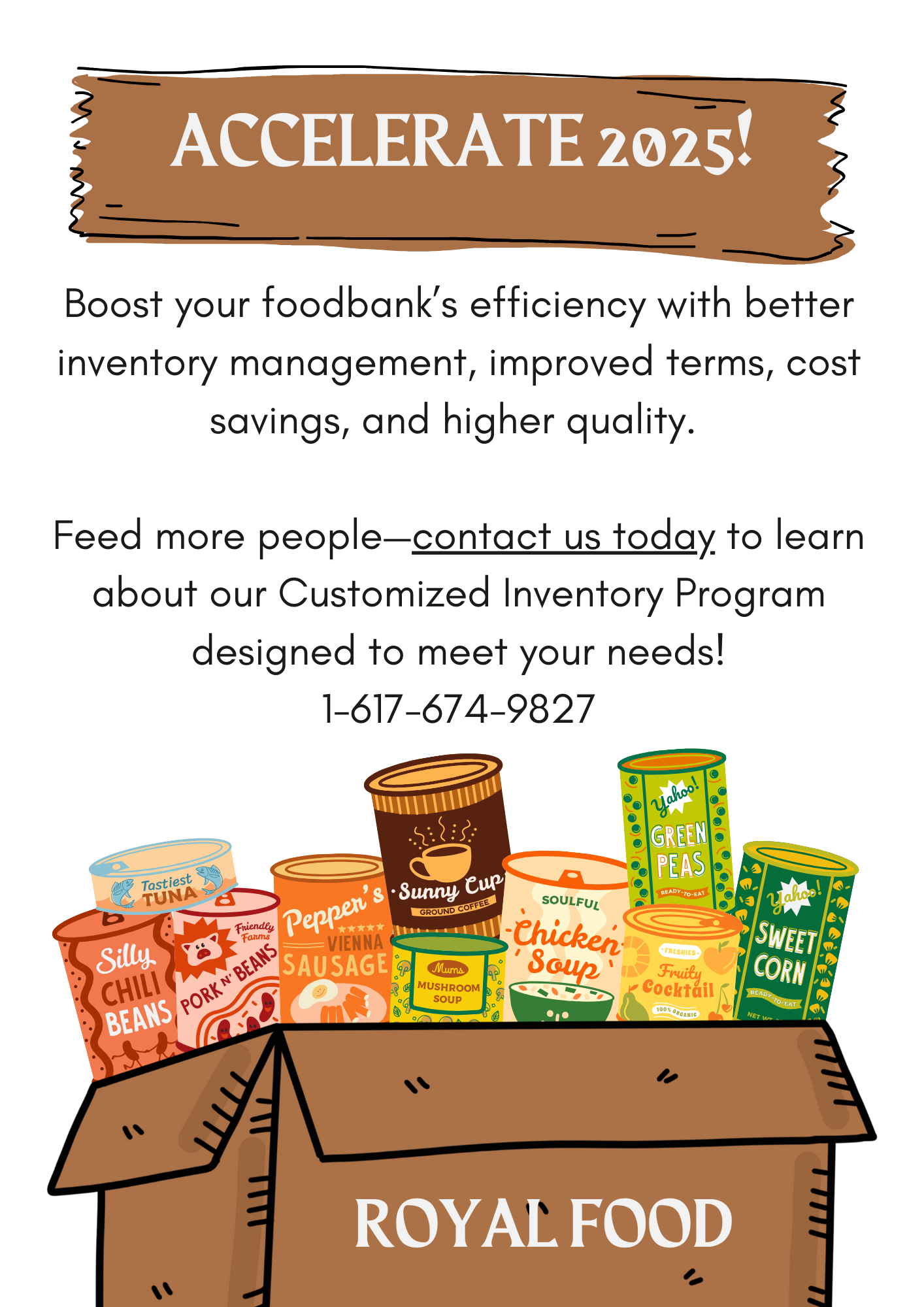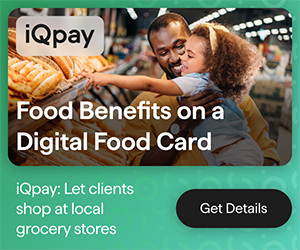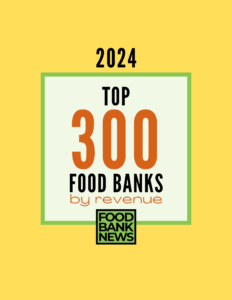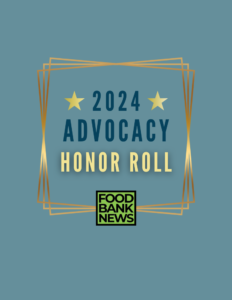Ideally, Food is Medicine initiatives run by food banks would be funded by the government through Medicaid. But with states moving slowly to adopt the waivers that would make that possible, hospitals have become a major source of support for Food is Medicine efforts.
“It’s been all about partnerships and collaboration, where we’ve seen different hospital networks that have different sets of funding,” said Greg Silverman, CEO at West Side Campaign Against Hunger (WSCAH), a hunger relief organization in New York City.
WSCAH, which has been working on Food is Medicine for a few years, is now getting about 25% of its $10 million in annual revenue from hospitals that pay WSCAH to provide healthy food to their patients. At the same time, WSCAH is building up technology and operations that will help it take advantage of Medicaid-funded insurance reimbursements once they become available through an 1115 waiver in New York state.
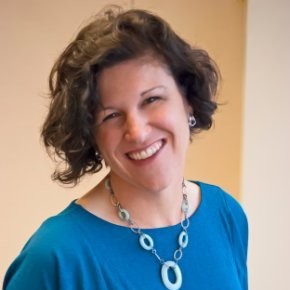
In Colorado, Food Bank of the Rockies is also teaming with hospitals as it builds out its activities in Food is Medicine. As in New York, Colorado does not yet provide reimbursements for healthy food through Medicaid. In the meantime, the food bank is addressing community health by partnering with hospitals, which are paying it to distribute healthy food to their patients.
“A majority of hospitals in Colorado have identified food security or access to healthy, affordable foods as a priority,” said Monica Buhlig, Chief Impact Officer.
A focus on healthy food is a nationwide trend among hospitals, as more of them are required to screen for non-medical factors that influence a person’s health – like where they live and what they eat – and make referrals accordingly. “Nonprofit hospitals need to invest in community health outside of their walls,” confirmed Buhlig, who worked in healthcare before coming to Food Bank of the Rockies in September.
In response to demand from hospitals, the food bank is now working to become a trusted partner of healthcare organizations. The work has led the food bank to develop a business model that ensures its costs of providing healthy food to food-insecure patients are covered. Once a hospital identifies how much money is available in its community benefit budget for food, “We say, ‘We can take this many patients for this amount of money,’” Buhlig said.
In fiscal 2024, the food bank worked with six healthcare centers to serve 533 patients with diseases like diabetes and hypertension. Originally, the program delivered weekly food boxes to each patient’s door for a year. One tweak to that approach has been to identify partner agencies where some patients can pick up their food boxes, allowing patients to establish ties with pantry partners while saving the food bank some transportation costs.
In another tweak, the program in 2025 will consist of six months of weekly food delivery, followed by six months of a $35 a month produce prescription card that will let patients purchase fresh produce at a number of grocery stores. Complemented with nutrition education delivered via text, the prescription cards are expected to help build sustainable patterns of healthy behavior, while also bringing down costs. “This was based on feedback from patients who said they wanted to be able to purchase their own food,” Buhlig said.
The results of the program, self-reported by patients, are positive, though the real test will be when biometric data, gathered by hospitals, becomes available. To date, the hospitals are not engaged in gathering such data. So far, however, the food bank is encouraged that 49% of patients reported a decrease in blood pressure and 49% reported lower blood-sugar levels after being on the program.
In New York City, WSCAH is currently engaged in a half-dozen or so Food is Medicine projects, supported by a variety of hospitals, with its biggest effort being its ongoing work with New York Presbyterian Hospital, in which it is making about 2,000 home deliveries a month to food-insecure patients who place orders for partially customized boxes of food through a digital interface.
Often, WSCAH gets involved when a health organization seeks to conduct academic research involving Food is Medicine and contracts with WSCAH to supply the food. “We’ve just been leaning into what we’re really good at, which is healthy food distribution,” Silverman said. “We tailor it to what they want because that’s not in their wheelhouse. Now these things are coming at us.”
WSCAH now has established business models, processes and technologies related to Food is Medicine, thanks to its work with hospitals. “Now we know how to do it,” Silverman said. “If someone says, ‘Oh, can you do this?’ Yeah, this is what it costs us. This is our process. We know we have the different pieces of technology we need to track it.”
Food Bank of the Rockies similarly has established processes to support Food is Medicine. In addition to a dietician, it has a coordinator who oversees hospital relationships and patient referrals. Deliveries for Food is Medicine are integrated into its food delivery program for seniors, with a driver dividing time between the two programs. Once a Medicaid 1115 waiver comes to Colorado, then the food bank would also have to add capacity for reimbursement billings. “We will be ready to say, ‘Look, here we are,’” Buhlig said.
Both Buhlig and Silverman see Food is Medicine as playing a central role in hunger relief going forward. “Ultimately, this is a guaranteed source of revenue,” Buhilg said. “If we’re able to bill Medicaid or bill other insurers for this, it is a guaranteed source of revenue that lets us have additional demonstrated impact in our communities.”
Silverman is pleased that WSCAH’s work with hospitals is not only getting more healthy food out into the community, but is also contributing to research about its importance. “We see this as the future of the work,” he said, adding, “We’re a good partner for this, we’re not afraid of it, and we think it’s incredibly important to the body of evidence of how we should be fighting hunger properly.” – Chris Costanzo
Like what you’re reading?
Support Food Bank News


